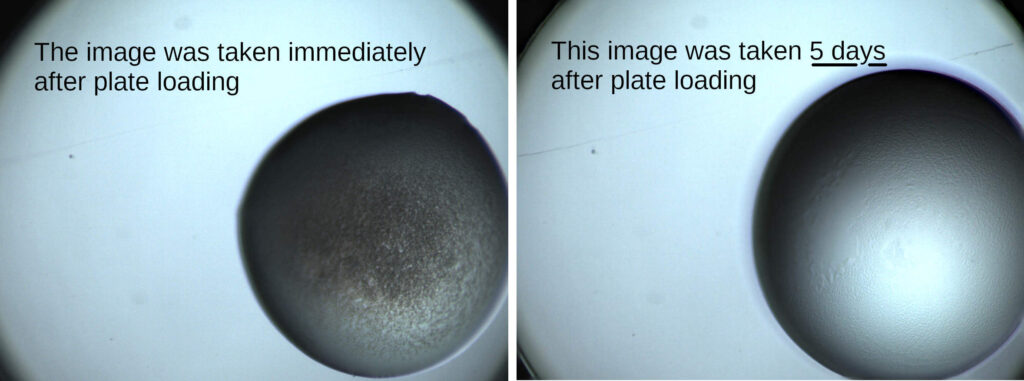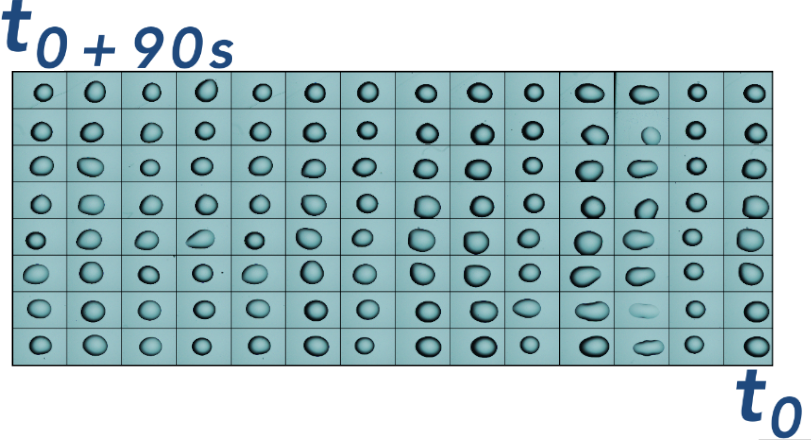Inadvertent reverse Vapor Diffusion in robotically loaded Plates

From time to time, especially in winter when the air is drier than usual, it’s interesting to make an observation on the images of a crystallization screen. On the first image, taken immediately after loading the plate, the drop looks like a heavily precipitated drop. A few days later, however, the drop looks clear. How can this be?
To answer this, there’s another important observation to make: The droplet appears slightly larger than before. The answer is that the robot’s selected dispensing volumes are too small for the actual working speed of the robot loading process!

As long as the well is exposed to air, the reservoir and droplet will evaporate water, even in a closed chamber with high relative humidity. The surface to volume ratio of the droplet is much greater than that of the reservoir. As a result, the droplet evaporates more than half of its volume, so that the droplet’s precipitant concentration exceeds the reservoir’s precipitant concentration before the sealing film can stop this process.

A total sample volume of only 200 nl is too small to be sealed in time, even at a plate loading speed of just over one minute, with column 1 showing the most pronounced effect. It is likely that these droplets will be hopelessly over-concentrated, even if a droplet is still clear but often heavily precipitated. Vapor diffusion does not start in the intended direction. Water from the now less concentrated reservoir will diffuse into the droplet over the course of a few hours, causing the volume to increase. When equilibrium is finally reached, the precipitated protein may dissolve again, but to what extent the solubility is reversible is unclear. Homogeneous nucleation from an amorphous precipitate is unlikely.
Please take this message as advice, the simplest way to solve this is to increase the dispensing volumes. This may not be the most efficient way to use a sample, alternatively the relative humidity could be increased, however this observation has been made even when the relative humidity in the chamber was already as high as >90%.
Best wishes from the Xtalconcepts team!
GO BACK
